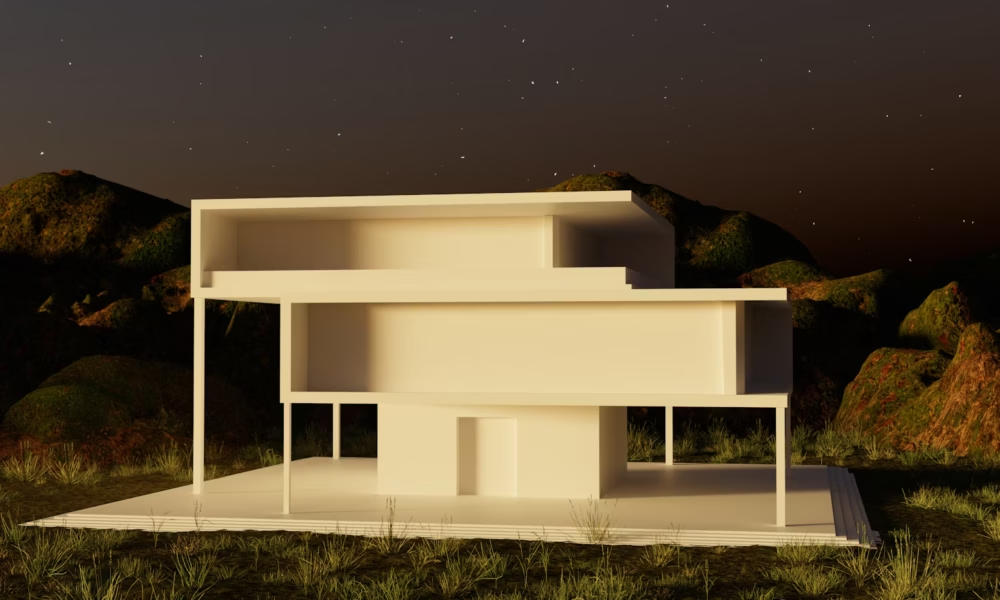In the past decade, the architecture and construction sector have experienced an in -depth transformation, to a large extent fed by the rise of digital software architecture. In the United States, more individuals than ever choose to build their own houses, and more companies avoid traditional architectural agencies in favor of advanced digital options. This transformation not only reforms the way in which houses are designed and constructed, but it transforms what customers want and also the way of competition within the sector. As digital technologies become increasingly accessible, easy to work and cheaply, they build a new potential for both private individuals and companies in the home construction industry.
A new era of home ownership: the self -building movement
One of the floating factors behind the growing demand for software for digital architecture is the increasing popularity of do-it-yourself houses in America. Once a niche movement for Do -the -e -Enthusiasts, this has now become mainstream. There are various social and economic reasons behind this movement. The most important and first are the astronomical costs of housing in most parts of the country. In San Francisco, New York and even in smaller cities, the housing costs have never been higher and they have cleared the conventional homeowner for most Americans.
Faced with these challenges, the increasing number of individuals and households turn to self -structure as a way to get control of their housing costs and to adjust their living spaces to meet their specific needs and values. Self -structure has emerged as a badge of autonomy, imagination and financial caution. People are looking for a solution for mass-produced homes in the suburbs and cookie-cutter estates, and instead choose houses that reflect their personality, lifestyle and sensitivity to the environment.
Technology enables the individual
The popularity of self -building has also been reinforced by the power of digital technology, which streamlines the process of design and planning. With online software platforms, users can now develop extensive architectural plans, modeling their houses in a 3D Home Design SoftwareAnd even give estimates for materials and construction time – all without any formal architectural training. This democratization of building design has enabled individuals to achieve what has ever been achieved by experts, and now it is aim to possess a personalized house closer than ever.
The inclusion of Augmented Reality (AR), Virtual Reality (VR) and Artificial Intelligence (AI) in Digital Software Development has brought this empowerment to an even larger level. Homebouwers can almost walk through their future houses, experiment with design elements and receive smart optimization and efficiency recommendations. Such interactivity and personalization cannot be offered by traditional agencies, the processes of which are longer, less agile and much more expensive.
From agencies to algorithms: the shift in business affinities
Not only individuals pick the benefits of digital architectural software. Companies in the construction and ownership sectors also make the change, so that old-fashioned agencies are brought behind them and embrace digital equivalents. There are both pragmatic and strategic motivations to do this.
Computer -based tools offer faster lead times, lower costs and higher scalability. A company can create different home designs, quickly revise them based on customer input and introduce new developments with speed and accuracy that would be unreachable on conventional resources. In addition, computer software offers data-driven analysis with which companies can optimize their designs for energy efficiency, material consumption and marketability.
Especially for small companies and startups levels, digital architecture software levels the playing field. Without the costs of maintaining a staff of internal architects or the employment of expensive agencies, these companies can remain agile and competitive. The flexibility of digital platforms also enables companies to switch smoothly with changing trends, such as the growing demand for green houses, minimalist houses or compatibility with smart home technology.
Adjustment and control: the new standard in the house design
Modern home buyers, whether they build themselves or put tailor -made houses in operation, require more individuality and more control. This is met by using digital software architecture that offers simple but extremely powerful tools. Users are now better able to participate in all aspects of designing their home, from blueprints to design, so that the end result can exactly achieve their vision.
One of the most important developments in this space is the development of software, where customers can tinker with accurate models of their home in a three -dimensional, interactive environment. It not only increases the value for the design process, but also bridges the gap between technical and creative solutions for building houses. The feedback given by three -dimensional modeling reduces the level of misunderstandings, accelerates approvals and offers higher satisfaction for all involved.
Sustainability and smart life: embedded in the blueprint
One of the best arguments for the use of digital architecture is the growing emphasis on sustainability and intelligent life. The digital design software makes the exact modeling of energy consumption, exposure to sunlight, ventilation and insulation efficiency, so that builders and home buyers can create sustainable houses from the ground. The maxima of the solar panel, integration of rainwater collection and passive heating techniques can be seamlessly included in the digital design.
Moreover, since Smart Home technology has grown, systems such as security, lighting, climate control and devices in the design of buildings have become the priority. Digital platforms make this integration possible by offering compatibility with smart systems and making simulation of connected home experiences possible. This integrated method is much more efficient than the afterwards of smart possibilities after construction is completed, and it appeals to a generation of consumers who are technologically advanced and expect seamless connectivity in their homes.
Economic shifts and the revolution of external activities
The increase in digital building also corresponds to broader economic trends, mainly among them the external work revolution. With millions of Americans who reconsider their hometown, many choose to leave highly concentrated city centers in favor of wider, more affordable and more personalized living spaces in suburbs or rural areas. Building an adapted house at a new location is now a feasible option, and digital tools facilitate this by eliminating geographical and logistical obstacles.
With online sites, customers can collaborate remotely with designers, engineers and contractors. Reviews, meetings and approvals are all possible online, making it easy to manage projects, even about distances. This has not only reduced the need for face-to-face communication, but also made it easier to build in places that people would not have considered before.
Conclusion: the future is digital
While the demand for personalized, sustainable and affordable homes is growing, digital software architecture will form the basis of the American home construction industry. The trend follows a broader cultural movement in the direction of empowerment, technology and individual self -expression. Homeowners who build dream homes or companies that grow their business is too important to ignore the attraction of digital possibilities.
Although architect companies still play a role in massive or complicated projects, the Golf decides. With speed, individuality and imagination that is most appreciated in an era, digital software architecture creates a new paradigm – one that will not only reform the houses in which we live, but also the way we design and build them.









